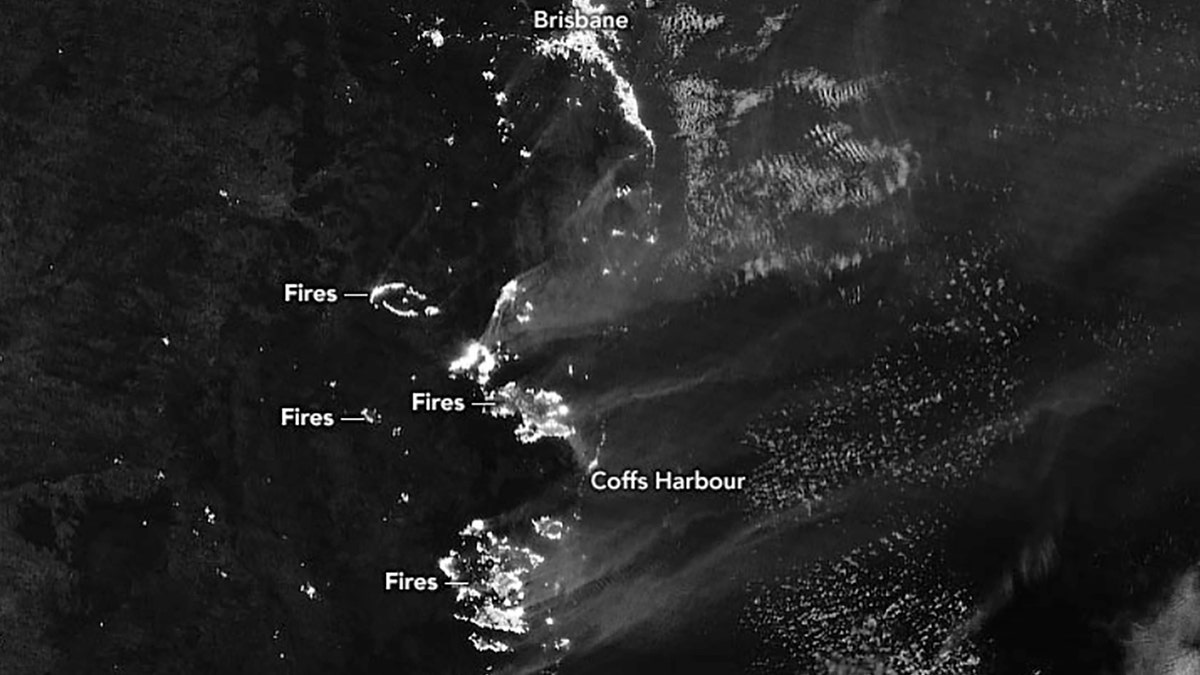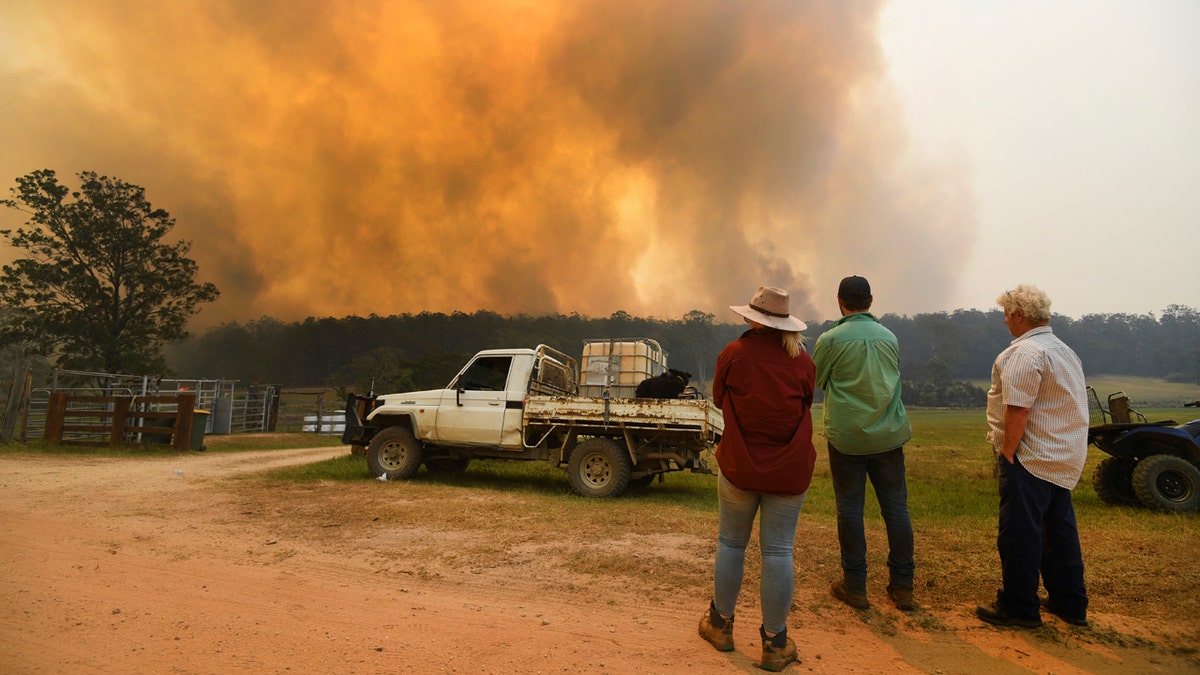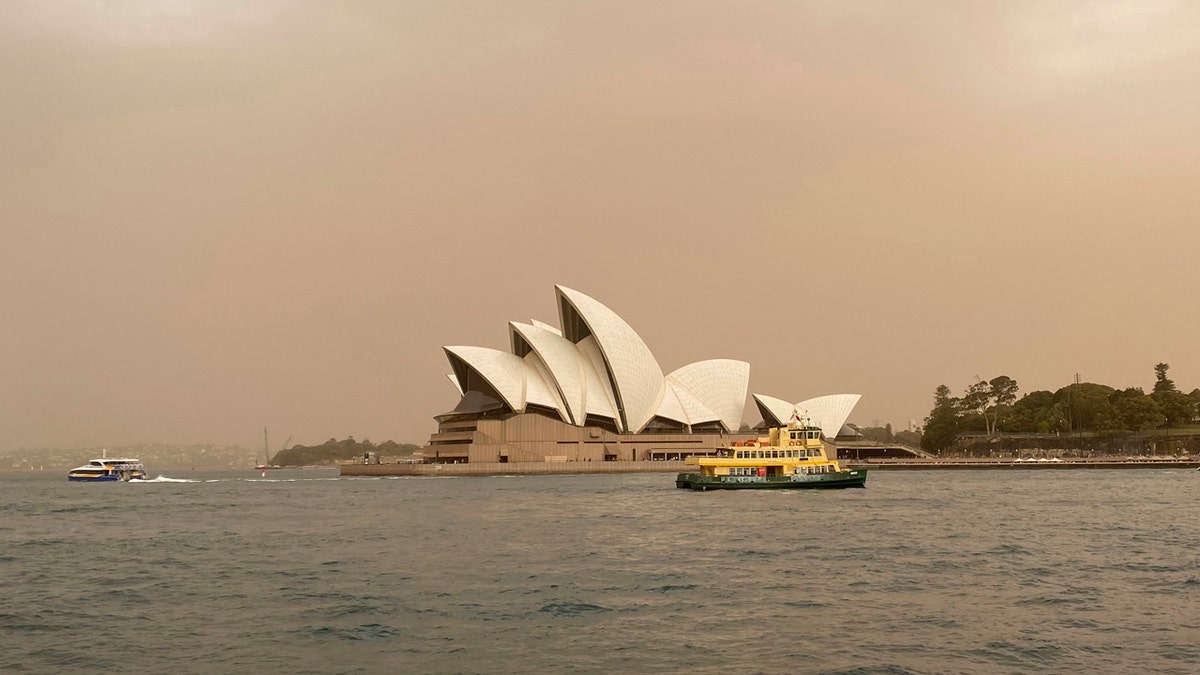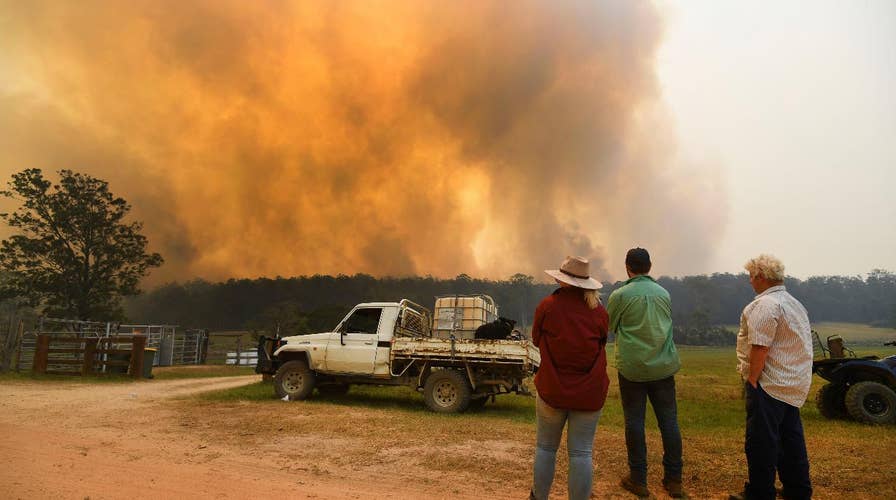Australian firefighters struggle to fast-moving flames as bushfires rage out of control
New South Wales remains under a week-long state of emergency; Benjamin Hall reports.
As explosive wildfires rage dangerously across Australia's most populated state on Tuesday, firefighters who saved a man's home from the flames made heartwarming news with their kindness.
The worst fires erupted in the state's northeast, where three people have died and more than 150 homes have been destroyed since Friday.
A man who was forced to evacuate when the blazes erupted late last week shared a heartening note to Facebook about firefighters who saved his home but apologized for drinking his milk.
Paul Sefky posted Saturday that he returned home and found the note left behind.
"It was our pleasure to save your house...sorry that we could not save your sheds," the note read, in part. "P.S. – We owe you some milk."

This Nov. 8, 2019, satellite photo taken by NASA shows hot, dry and windy weather conditions as bushfires burn in the eastern part of News South Wales state. (NASA via AP)
A weeklong state of emergency has been declared in New South Wales state, where the city of Sydney is located, allowing the fire service to direct government agencies, including ordering the shutdown of utilities or taking possession of property to help the emergency response.
Of 85 fires burning across New South Wales, 14 were rated as emergencies and burning out of control by late Tuesday afternoon, the Rural Fire Service said. That's the largest number across the state in decades apart from Friday, when an unprecedented 17 emergency fires blazed.

This Nov. 9, 2019, satellite photo taken by NASA shows Bushfires still raging in Australia. (NASA via AP)
Rural Fire Service Commissioner Shane Fitzsimmons said Tuesday that many people had heeded his warning and evacuated their homes in the danger zone well ahead of the escalating fire threat.
"The last thing we want to do is be managing mass evacuations in pretty difficult-to-access areas and running the risk of having a whole bunch of congested roadways and seeing people incinerated in their cars," he told reporters.
AUSTRALIA WILDFIRE VICTIM'S FRANTIC LAST WORDS TO DAUGHTER-IN-LAW: 'WE'RE ON FIRE!'
Winds were reaching 50 mph in some areas and were expected to gather pace as the day progresses. There were reports of the potential destruction of homes south of the town of Taree near where a 63-year-old woman died in her home on Friday, Fitzsimmons said. A "small number of properties" appeared to have been destroyed or damaged by late Tuesday, he said.

Locals watch smoke from a large bushfire outside Nana Glen, near Coffs Harbour, Tuesday, Nov. 12, 2019. (Dan Peled/AAP Images via AP)
More than 600 schools and technical colleges were closed because they are close to woodlands at risk of fire. More than 3,800 square miles of forest and farmland had already burned across the state this fire season, more than three times the 1,080 square miles that burned during all of last season.
CLICK HERE FOR THE FOX NES APP
The Australian fire season, which peaks during the Southern Hemisphere summer, has started early after an unusually warm and dry winter.

Sydney Opera House is backdropped by haze from wildfires near the city, in Sydney, Australia, Tuesday Nov. 12, 2019. (Mette Estep / NTB scanpix via AP)
The catastrophic fire warning is a first for Sydney. World Meteorological Organization spokeswoman Clare Nullis told reporters in Geneva that "catastrophic" was the top of the danger scale in Australia, and probably anywhere.
"The current fires are due to a combination of factors, including low soil moisture, heat and importantly, wind direction and wind speed," she said.
The Associated Press contributed to this report.




















